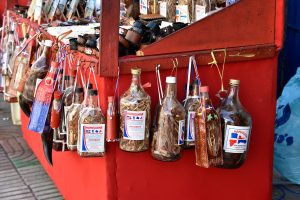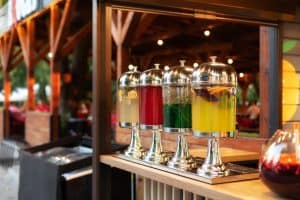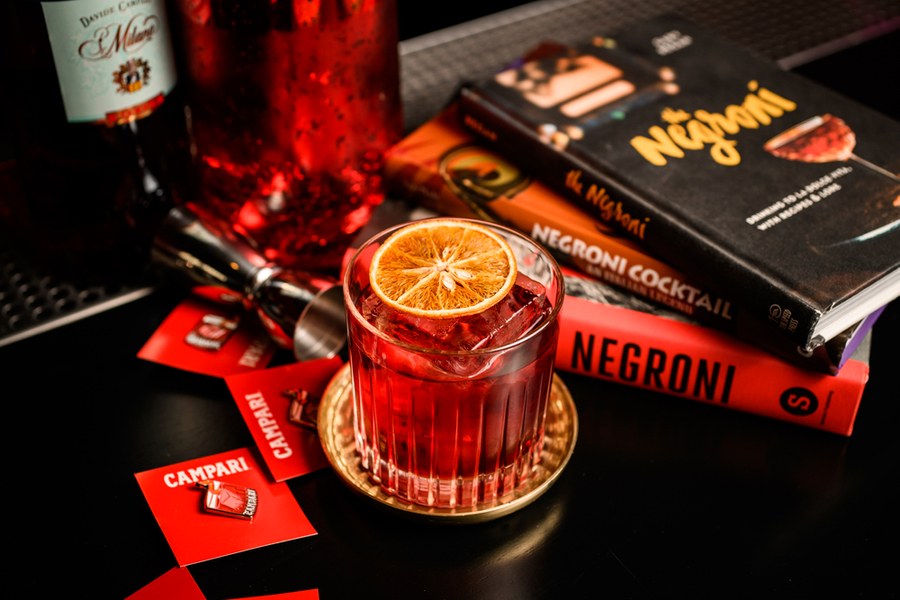
Despite its ruby red appearance, which may remind you of a sugary children’s party drink, the Negroni is very much a grownup drink. The Negroni is an Italian classic that packs a punch with Campari, sweet vermouth, and gin.
It’s strong, it’s boozy, but what does a Negroni taste like?
To be considered a proper Negroni, Campari is the only unchanging ingredient. The Campari and gin, to a lesser degree, add bitterness to the cocktail while the sweet vermouth brings it all into a bittersweet harmony. A classic Negroni has a slightly bitter yet refreshing taste.
We’ll briefly investigate the origins of the classic Negroni cocktail as we know it today. Thereafter, we’ll be discussing each of the three ingredients individually. We’ve also included a classic Negroni recipe and some variations.
Origin of the Negroni
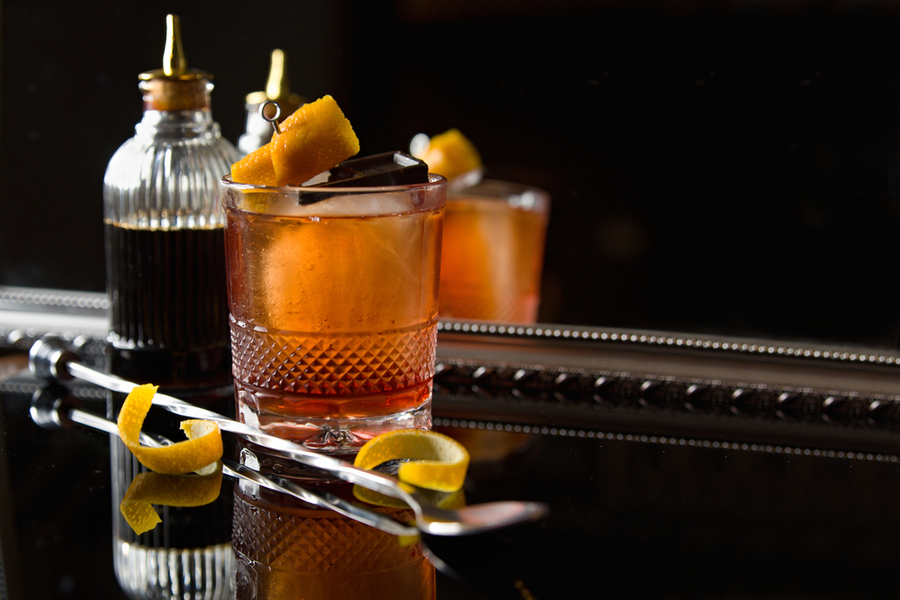
As with all cocktail lore, the origin is lost in the mists of time. Picture it. Florence, 1919. The most prevailing tale is that Italian Count Camillo Negroni, who usually drank an Americano cocktail, asked the bartender for a stronger cocktail.
The soda water was to be replaced with gin. The bartender at Caffe Cassoni obliged and garnished it with an orange strip to show it was a different cocktail.
By now, we know cocktails can morph into new ones. Same with the Negroni. It started in the 1860s with the Milano-Torino—named after the locations where the ingredients came from.
Milano (Milan) is home to Campari, while Torino (Turin) is where sweet vermouth hails from. In Milan’s Caffe Camparino, bartenders served equal parts of the ingredients over ice, always garnished with an orange wedge, as an aperitivo. They nicknamed this the Mi-To cocktail, according to Giadzy.
But a rolling stone doesn’t gather moss. The Mi-To evolved into the Americano cocktail, served at Gaspare Campari’s bar in Milan. They served the first Americano in the 1860s. The drink is effortless to make—combine equal parts sweet vermouth and Campari (just like the Mi-To) and top it up with sparkling or soda water.
Wealthy Americans fled to Europe and Italy to get alcohol during the prohibition era. This cocktail proved popular with droves of Americans, and from their visits, someone named it after them. And as we now know, they replaced the soda water with gin and resulting in the Negroni.
Ingredients for a Negroni
Because a Negroni only has three ingredients, it is imperative to have the best possible ingredients on hand when you mix this classic cocktail.
We’ll look at the three ingredients (Campari, sweet vermouth, and gin) in isolation and briefly discuss what each ingredient brings to the cocktail.
Campari
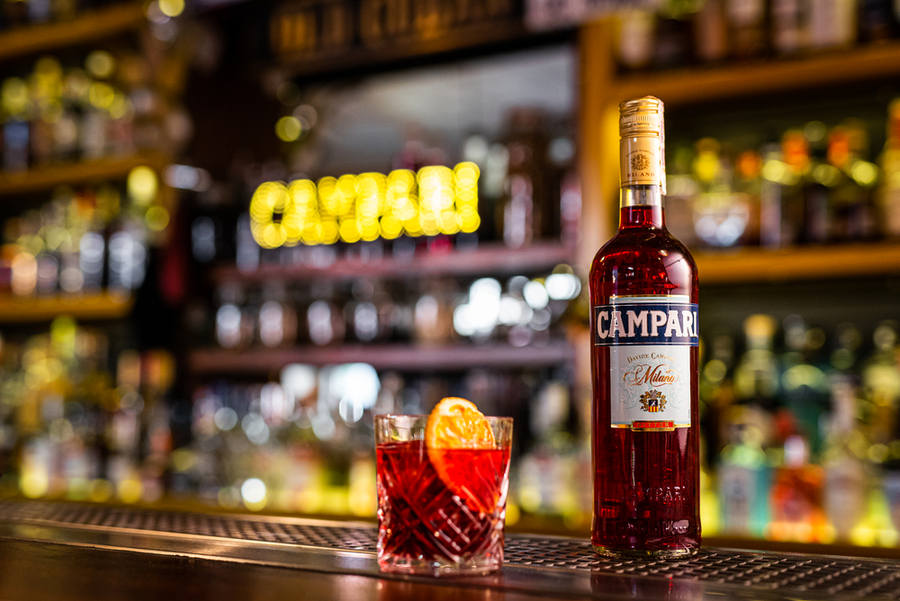
Campari can stand its ground because it is made with premium ingredients to start with. Campari was invented in 1860 by Italian Gaspare Campari in Novare, and it’s still going strong as one of the most popular Italian liqueurs on the market. It is made from an infusion of herbs and fruit.
The aroma on the nose is a complex mixture of orange, herbs, and floral notes, while the flavor is pleasantly bitter with notes of wood, orange, and herbs with a hint of sweetness.
Sweet Vermouth
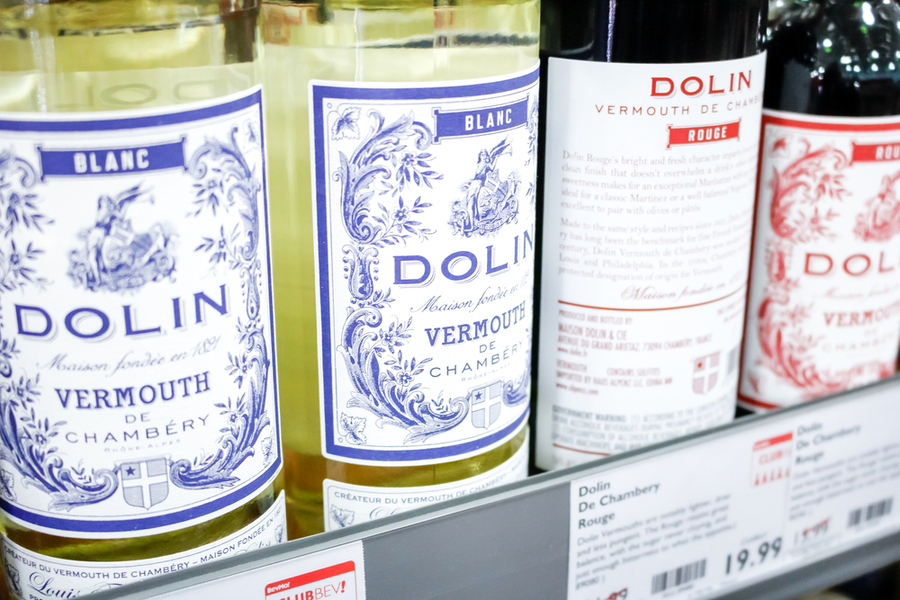
Unlike its dry or semi-dry cousin, vermouth, sweet vermouth has between 130 and 150 grams of cane sugar per liter. Often it is mahogany red through caramel for coloring, but this isn’t always the case.
The key with sweet vermouth, in general, is to store it in the fridge after opening it and use it within a month. You can use any sweet vermouth you like. If you’re stuck, look here for some guidance.
You can expect a floral or spicy taste from sweet vermouth, and as the name suggests, sweetness.
Gin

London dry gin is the traditional benchmark against which other gins are measured. Because gin is primarily distilled from juniper berries and other botanicals, the taste is somewhat citrussy, or if it is a more juniper-forward gin, you can expect a pine taste. The three ‘traditional’ expressions of gin are London dry gin, Plymouth gin, and Old Tom gin.
Plymouth gin has a slightly fruity taste and will play nicely with the fruitiness of the Campari and sweet vermouth. It is full-bodied and highly aromatic. A creamy sweetness with vanilla and juniper notes evolves into a lemon-tasting flavor on the palate.
For a more citrusy taste, Old Tom is an excellent choice. It is also sweeter than other types of gin and is regarded as the ‘missing link’ between Dutch Genever and London dry gin. Old Tom is sweeter than London dry gin, and citrus notes are present.
If you’re stuck, here’s a lineup of the best gins for every budget with recommendations for cocktails.
What Does a Negroni Taste Like?

Now that we’ve established the elements of a Negroni and one’s taste profile, we can get to discussing what a Negroni tastes like. The Negroni has spawned various variations on the theme, but to be considered a proper Negroni, Campari is the unchanging ingredient.
We’ll look at the classic Negroni and some other variations below.
Classic Negroni
Equal parts of Campari, sweet vermouth, and gin mixed with ice in an old fashioned glass is all there is to a classic Negroni. The key to mixing the perfect Negroni is to ensure that the vermouth-gin combination complements the bitterness of the Campari.
Once you’ve found the winning combination of Campari-gin-vermouth write it down and keep it in a safe place. Memorize it too. Your bartender will respect you, and you can enjoy the perfect drink.
Taste profile: A bitter cocktail that tastes like licorice root and herbs with a hint of sweetness and fruitiness. The sweet vermouth brings some sweetness, and the orange peel garnish further adds some sweetness. Because of the gin, you can expect a taste of juniper/pine with coriander seed and lemon.
For a dramatic twist, use Scapegrace Black Gin—they use butterfly pea powder which imparts a deep blackberry hue to the gin. When it meets tonic water or citrus, the gin changes to a lavender shade.
Black Negroni
Let’s take the classic Negroni and turn it into a drink fit for the dark side.
Justin Carpena from Tamborim Bar & Grill, a Brazilian restaurant in Jersey City, NJ. Scapegrace Black Gin replaces the colorless gin, and Bitter Truth EXR, an alpine liqueur, replaces the traditional Campari to add bitterness and darkness to the cocktail.
The sweet vermouth is split with another alpine liqueur, Dolin Génépi le Chamois. The vermouth-and-Génépi liqueur is further steeped in a mango pineapple chili black tea for 18 hours at room temperature (called the Antica Killer Rio) to take on an even darker hue.
To make the Antica Killer Rio, combine four parts Dolin Génépi le Chamois with three parts Cinzano Rosso sweet vermouth and steep it in the tea mixture for 18 hours. Strain the mixture and bottle it in a sterilized bottle.
To make this highly dramatic drink, you’ll combine the following quantities in a mixing glass with ice: one ounce (30 ml) each of Scapegrace black gin, Antica Killer Rio, and Bitter Truth EXR.
Strain the mixture into a rock glass over an ice ball or large ice cube. Top it with two dashes of grapefruit bitters. A torched orange wheel is used to garnish the drink.
A tad melodramatic? Perhaps. Delicious? Absolutely. Showstopper and crowd-pleaser? You bet your bottom dollar it is!
Taste Profile: Highly herbaceous with a hint of juniper and some sweetness, but overall bitter and refreshing.
Iron Negroni
Created by Simon Difford from Difford’s Guide in 2018, this spin on the classic Negroni continues the theme of black Negroni cocktails.
To make this dark version, you’ll need one ounce (30 ml) each of Rutte dry gin, Ferro China Baliva liqueur, and Martini Rosso sweet vermouth. Mix it all together with ice in an old fashioned glass and garnish it with an orange zest twist.
Taste profile: a smooth cocktail that resembles flat Coke. The Ferro China Baliva liqueur contains iron citrate, which gives the liqueur and cocktail a slight metallic aftertaste, along with bitterness from the quinine.
The bitterness is balanced with sweetness from the sweet vermouth, and the gin adds an herbaceous taste. Overall: bittersweet, but not as bitter as the classic Negroni.
Cornwall Negroni
The variation for the gin lover. Gin takes the limelight while the bitter liqueur and vermouth are supporting actors. They serve the cocktail up in a coupe glass, but you might prefer it on the rocks.
You’ll need 2 ounces of Rutte dry gin (any London dry will work as well), and ½ ounce each of Martini Rosso sweet vermouth, Campari red liqueur (any bitter red liqueur can work), and Punt e Mes vermouth (any full-bodied will do). Stir all the ingredients together with ice and strain into a coupe glass. One dash of Angostura Orange bitters.
Taste profile: Gin-forward with juniper in the lead, balanced with a hint of bitterness and some sweetness from the vermouth. It scores 9/10 for boozy and around 7/10 for dryness and bitterness, according to Difford’s Guide.
Less is More Negroni
Instead of the traditional three ingredients used in a Negroni, this iteration by Guiseppe Gallo only features two ingredients. One bottle less to buy and eventually handle when you mix one up. It’s also known as the Casa Savoia Negroni. The Savoia Americano Rosso is positioned in the middle of Italian bitter liqueurs and sweet rosso vermouths. Savoia American is an amaro dolce (bittersweet) aperitivo made with oak-aged D.O.C. Marsala Fino wine.
You’ll need 1 2/3 ounce (50 ml) of Savoia Americano Rosso and 5/6 ounces (25 ml) of dry gin. Combine them in an old fashioned glass with ice and lightly stir.
Taste Profile: Bittersweet due to the Savoia Americano Rosso liqueur. You can also expect hints of juniper coming through.
Conclusion
The overall taste description of a Negroni is bittersweet, leaning more toward the bitter side of the scale. There are countless other spinoff recipes on the classic Negroni, which will offer a different taste altogether.
The key to mixing a classic Negroni is to find a gin and sweet vermouth that works well together and in harmony with the Campari. We hope you’ll try this refreshing drink if you have never had one, or try some of the other recipes to expand your cocktail repertoire.
Let’s all raise a glass to the Count!




